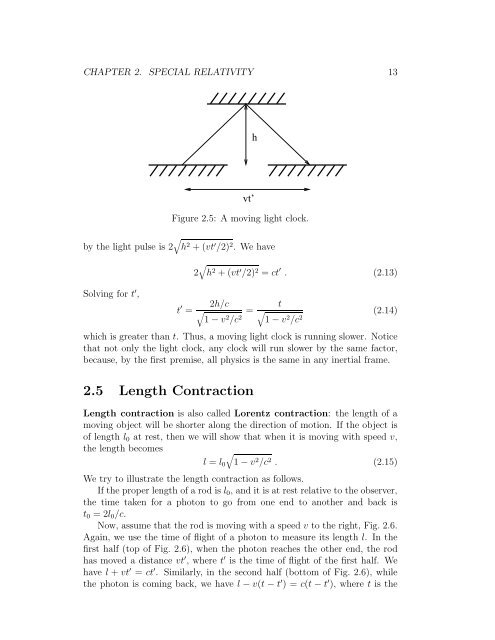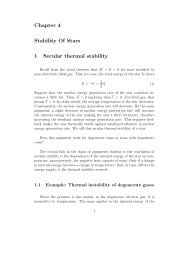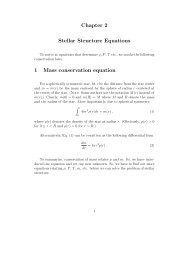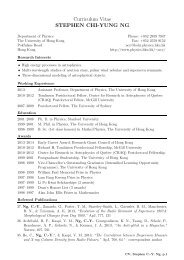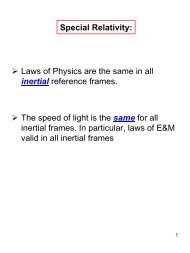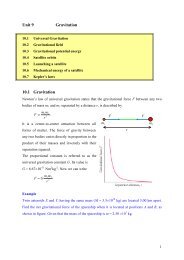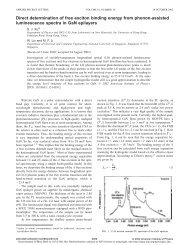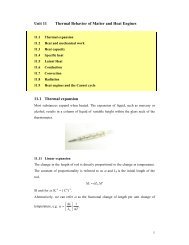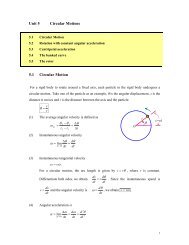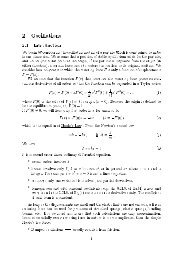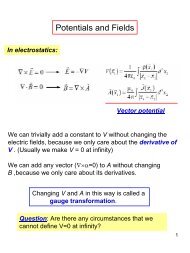here - Department of Physics, HKU
here - Department of Physics, HKU
here - Department of Physics, HKU
Create successful ePaper yourself
Turn your PDF publications into a flip-book with our unique Google optimized e-Paper software.
CHAPTER 2. SPECIAL RELATIVITY 13<br />
h<br />
vt’<br />
Figure 2.5: A moving light clock.<br />
√<br />
by the light pulse is 2 h 2 + (vt ′ /2) 2 . We have<br />
Solving for t ′ ,<br />
t ′ =<br />
√<br />
2 h 2 + (vt ′ /2) 2 = ct ′ . (2.13)<br />
2h/c<br />
√<br />
1 − v 2 /c = t<br />
(2.14)<br />
√1 2 − v 2 /c 2<br />
which is greater than t. Thus, a moving light clock is running slower. Notice<br />
that not only the light clock, any clock will run slower by the same factor,<br />
because, by the first premise, all physics is the same in any inertial frame.<br />
2.5 Length Contraction<br />
Length contraction is also called Lorentz contraction: the length <strong>of</strong> a<br />
moving object will be shorter along the direction <strong>of</strong> motion. If the object is<br />
<strong>of</strong> length l 0 at rest, then we will show that when it is moving with speed v,<br />
the length becomes<br />
l = l 0<br />
√1 − v 2 /c 2 . (2.15)<br />
We try to illustrate the length contraction as follows.<br />
If the proper length <strong>of</strong> a rod is l 0 , and it is at rest relative to the observer,<br />
the time taken for a photon to go from one end to another and back is<br />
t 0 = 2l 0 /c.<br />
Now, assume that the rod is moving with a speed v to the right, Fig. 2.6.<br />
Again, we use the time <strong>of</strong> flight <strong>of</strong> a photon to measure its length l. In the<br />
first half (top <strong>of</strong> Fig. 2.6), when the photon reaches the other end, the rod<br />
has moved a distance vt ′ , w<strong>here</strong> t ′ is the time <strong>of</strong> flight <strong>of</strong> the first half. We<br />
have l + vt ′ = ct ′ . Similarly, in the second half (bottom <strong>of</strong> Fig. 2.6), while<br />
the photon is coming back, we have l − v(t − t ′ ) = c(t − t ′ ), w<strong>here</strong> t is the


